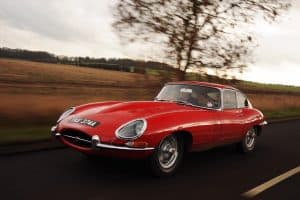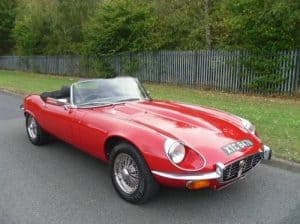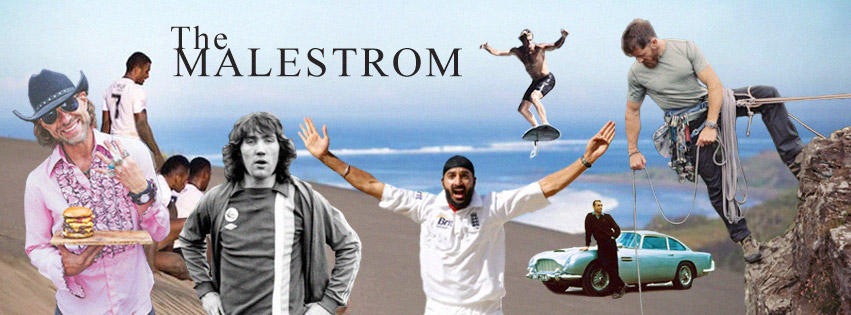
Here at The MALESTROM, we like our motors, but often feel they don’t make them like they used to. There’s something about the curves and purr of a classic car that really gets our motor revving, so we thought we’d put the spotlight on some of the most stylish rides ever to come out of the factory. First up is the iconic E Type Jaguar, car enthusiast Frank Evans takes us through its storied history.
Sir William Lyons started the Swallow Side Car Company in the 1920s. From there he ventured into making sports cars and saloons.
During the 1950s his cars won the 24 hour Le Man car race no less than 5 times in 1951, 1953, 1955, 1956 and 1957 using the C Type and D Type Jaguar. Sir William wanted to transfer this success on the track to the road and so the idea of the E Type Jaguar was born.
By the time the Beatles were taking those first tentative steps on the road to becoming the biggest band in the world, Sir William Lyons was waiting to unveil the E Type Jaguar. The E Type Jag as they became to be known, was unveiled in 1961 at the Geneva Motor Show.
In typical British fashion, there were not enough E Types to go round the different press events so an additional car was required to go to the motor show.
It was left to one of Jaguar’s PR men, Bob Berry, to drive the car from England to the Parc des Eaux Vives. He drove it flat out all the way and just made it for the launch with 20 minutes to spare for a quick wash and polish.

The press and public loved it. Enzo Ferrari was quoted as saying,
“it was the most beautiful car ever made”
And at £2097 for the roadster, and £2196 for the Coupe, it was cheaper and faster than its rivals made by Ferrari and Aston Martin. Jaguar had planned to make 250 cars, but by the end of the Geneva Motor Show, they had orders for 500. By the time the E Type came to the end of its life in 1975, it had sold in excess of 72,000.
The E Type Jaguar was a replacement for the XK150 sports car in 1961. There were not many cars that could keep up with the E Type as it had a top speed of 150 miles an hour from a 3.8cc 6 cylinder engine.
The engine has 265 bhp and could do 0-60 in 6.8 seconds, not bad considering the car only had four gears when it was first made. The average car in 1961 could just about make 60 to 80 mph which put the E Type in a class of its own. Petrol consumption was around 17 mpg.
The cars heyday for most enthusiasts was between 1961 to 1967 and the Series 1 as they where known. It was certainly the best time to be an E Type owner as the arrival of the motorways in Britain had just started in 1959. It was also possible to try out the claimed top speed of 150mph, as the current speed limit of 70mph was not made law until December 1965.

By 1965 Jaguar had added another engine to the range, the 4.2-litre engine. This created the same top speed and bhp but was able to create an extra 10% more torque from 240 to 283 Ib. Ft. When the car was road tested by Autocar in 1965, they said it was the fastest car they had ever tested with 0 to 60 done in 7.6 seconds and reached a top speed of 153mph.
As the car grew in age it acquired more gadgets. In 1968 we saw the launch of the series 2 E Type. Air conditioning and power steering became available but the car lost its classic look when the light covers where removed.
At this time sales were going through the roof in America and this also coincided with the American safety and environmental lobby who were becoming bigger and more powerful as the years went by. All car manufacturers had to abide by the new rules but it meant Jaguar had to come up with new ways of making E Types.
For example, new US laws came into force in the late 1960s regarding the height of bumpers so that if you had a crash, there would be less impact as they were all at the same height.
In 1971, we saw the final incarnation of the E Type. This was known as series 3. It was slightly longer and fatter than before. This allowed for a row of back seats in the coupe. This was known as the 2+2 coupe.
Although I should think as with most sports cars, there was just enough room for children to sit in the back. The cars speed was reduced to help with US emission laws but this did not stop the E Type Jaguar from being a hit in the states.
The engineers at Jaguar came up with a brand new 5.3-litre V12 engine. The performance was slightly down on before with 254 Brake Horse Power, a top speed of 135 miles per hour and 0 – 60 in 6.8 seconds. The V12 became a success in its own right and was used in Jaguar’s XJ and XJS range until 1992.
After the oil crisis of 1973, Jaguar was thinking about the future of its cars. From America came the news that would eventually kill off the E type. The powerful safety lobby in the US now wanted to ban all soft top cars to reduce road deaths.
The roadster was one of the most popular exports to the USA so drastic action was required. By the time the US Congress came to their senses and decided to ditch the law, it was too late. Jaguar had already started to build a new car.

The new car was the XJS and was built in coupe form only for many years as a result of the planned US legislation. The XJS was more of a grand tourer and was produced from 1976 to 1996, which was 6 years longer than the E Type.
Few cars can be looked upon as a piece of art, but in 1996, the New York Museum of Modern Art acquired an E Type Jaguar Roadster for display. This was only the third car to enter the collection.
The Jaguar E Type is still one of the most desirable cars in the world and holds it’s own with some of the more modern sports cars. In March 2008, the Daily Telegraph made an online list of the worlds top 100 most beautiful cars of all time. The E Type was ranked first. It is unlikely we will see a car as magnificent as the E Type Jaguar again.
There’ll be more reviews of the classics by Frank in the weeks and months to come, so stay tuned to The MALESTROM.
Click the banner to share on Facebook


